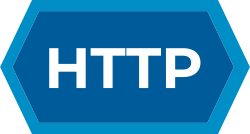HTTP 1.0
Under HTTP 1.0, connections should always be closed by the server after sending the response. [1]
Since at least late 1995, [2] developers of popular products (browsers, web servers, etc.) using HTTP/1.0, started to add an unofficial extension (to the protocol) named "keep-alive" in order to allow the reuse of a connection for multiple requests/responses. [3] [4]
If the client supports keep-alive, it adds an additional header to the request:
Connection: keep-alive
When the server receives this request and generates a response, if it supports keep-alive then it also adds the same above header to the response. Following this, the connection is not dropped, but is instead kept open. When the client sends another request, it uses the same connection.
This will continue until either the client or the server decides that the conversation is over and in this case they omit the "Connection:" header from the last message sent or, better, they add the keyword "close" to it:
Connection: close
After that the connection is closed following specified rules.
Since 1997, the various versions of HTTP/1.1 specifications acknowledged the usage of this unofficial extension and included a few caveats regarding the interoperability between HTTP/1.0 (keep-alive) and HTTP/1.1 clients / servers. [5]
HTTP 1.1
In HTTP 1.1, all connections are considered persistent unless declared otherwise. [5] The HTTP persistent connections do not use separate keepalive messages, they just allow multiple requests to use a single connection. However, the default connection timeout of Apache httpd 1.3 and 2.0 is as little as 15 seconds [6] [7] and just 5 seconds for Apache httpd 2.2 and above. [8] [9] The advantage of a short timeout is the ability to deliver multiple components of a web page quickly while not consuming resources to run multiple server processes or threads for too long. [10]
Keepalive makes it difficult for the client to determine where one response ends and the next response begins, particularly during pipelined HTTP operation. [11] This is a serious problem when Content-Length cannot be used due to streaming. [12] To solve this problem, HTTP 1.1 introduced a chunked transfer coding that defines a last-chunk bit. [13] The last-chunk bit is set at the end of each response so that the client knows where the next response begins.

